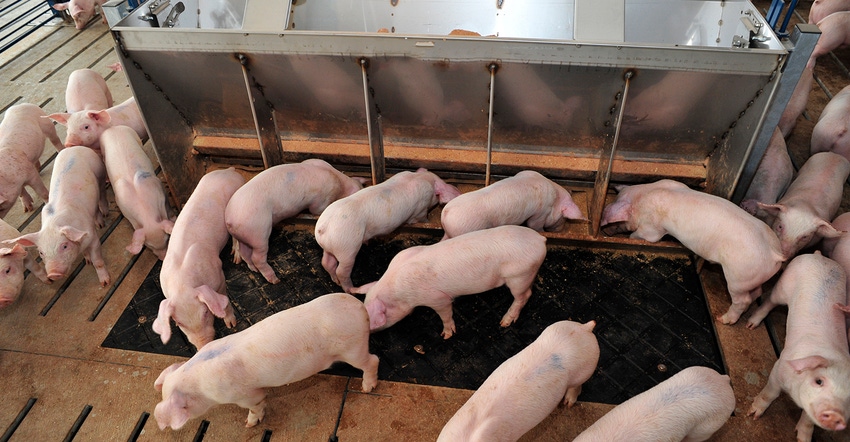Novel bacterial phytase impact on growing pigs
Increased digestibility of amino acids and gross energy indicates that the phytase used had some extra phosphoric effects.
March 31, 2022

The effect of microbial phytase on calcium and phosporus digestibility in diets for pigs and poultry is well established. In poultry, it also appears that the effect of phytase in increasing amino acid digestibility is consistent, but that is not the case when phytase is added to diets for pigs.
However, in many experiments, relatively low levels of phytase was used and it is not known if greater concentrations of phytase is needed to increase amino acid digestibility. A novel consensus bacterial six-phytase variant (PhyG; Danisco Animal Nutrition and Health, IFF, USA) has been recently developed; however, it is not known if this phytase results in increased digestibility of AA and other nutrients.
Therefore, an experiment was conducted to test the hypothesis that inclusion of increasing levels of the novel phytase in diets for growing pigs increases the apparent ileal digestibility of crude protein and AA, and the apparent total tract digestibility of gross energy and minerals.
A negative control diet based on corn, soybean meal and canola meal was formulated to be deficient in total Ca (-0.15%), standardized total tract digestible P (-0.16%) and standardized ileal digestible AA (-0.02%) in comparison with NRC recommendations. Five additional diets were formulated by adding 250, 500, 1,000, 2,000 or 4,000 phytase units/kg of the novel phytase to the NC diet. Eighteen ileal-cannulated pigs (17.81 ± 1.71 kg) were fed the six experimental mash diets in three 11-day periods resulting in nine replicate pigs per diet. Each period consisted of five days of adaptation, four days of fecal collection and two days of collection of ileal digesta.
Nutrient digestibility results
The AID of crude protein, indispensable AA and dispensable AA increased (linear, P < 0.01; quadratic P < 0.05) as the concentration of phytase increased in the diets (Table 1). Increased concentration of phytate in diets due to inclusion of canola meal likely increased the positive influence of phytase on AA digestibility.
Pigs used in this experiment also had an initial body weight of less than 20 kg, whereas most previous experiments that reported no effect of phytase on AA digestibility used pigs close to 40 kg. It is possible that the impact of phytase on AA digestibility is greater in younger pigs than in older pigs, but further investigations are needed to confirm this.
Linear (P < 0.01) and quadratic (P < 0.05) increases in the ATTD of Ca, P, K, and Cu were also observed as phytase increased in the diets (Table 2). The ATTD of GE and Mg also increased (linear, P < 0.05) as phytase concentration increased in the diets. Therefore, results indicate that the novel phytase used in this experiment hydrolyzed the phytate (or phytic acid) in the stomach and reduced the insoluble metal cation-phytate complexes in the small intestine, which subsequently increased the digestibility of minerals.
Overall conclusions
Inclusion of a novel consensus phytase to diets containing corn, soybean meal and canola meal increased the AID of CP and AA, as well as the ATTD of GE and minerals. These results are likely due to the ability of phytase to hydrolyze phosphate groups from phytate, reduce the anti-nutritional effect of phytate and consequently increase energy and nutrient digestibility.
The increased digestibility of AA and GE indicates that the phytase used had some extra phosphoric effects. It is possible that the impact of phytase on AA digestibility is dependent on diet composition, phytate concentrations, phytase source and dose level, and pig maturity; however, research is needed to investigate if and how these factors influence phytase efficiency.
Source: Charmaine D. Espinosa and Hans H. Stein, who are solely responsible for the information provided, and wholly own the information. Informa Business Media and all its subsidiaries are not responsible for any of the content contained in this information asset.
You May Also Like


